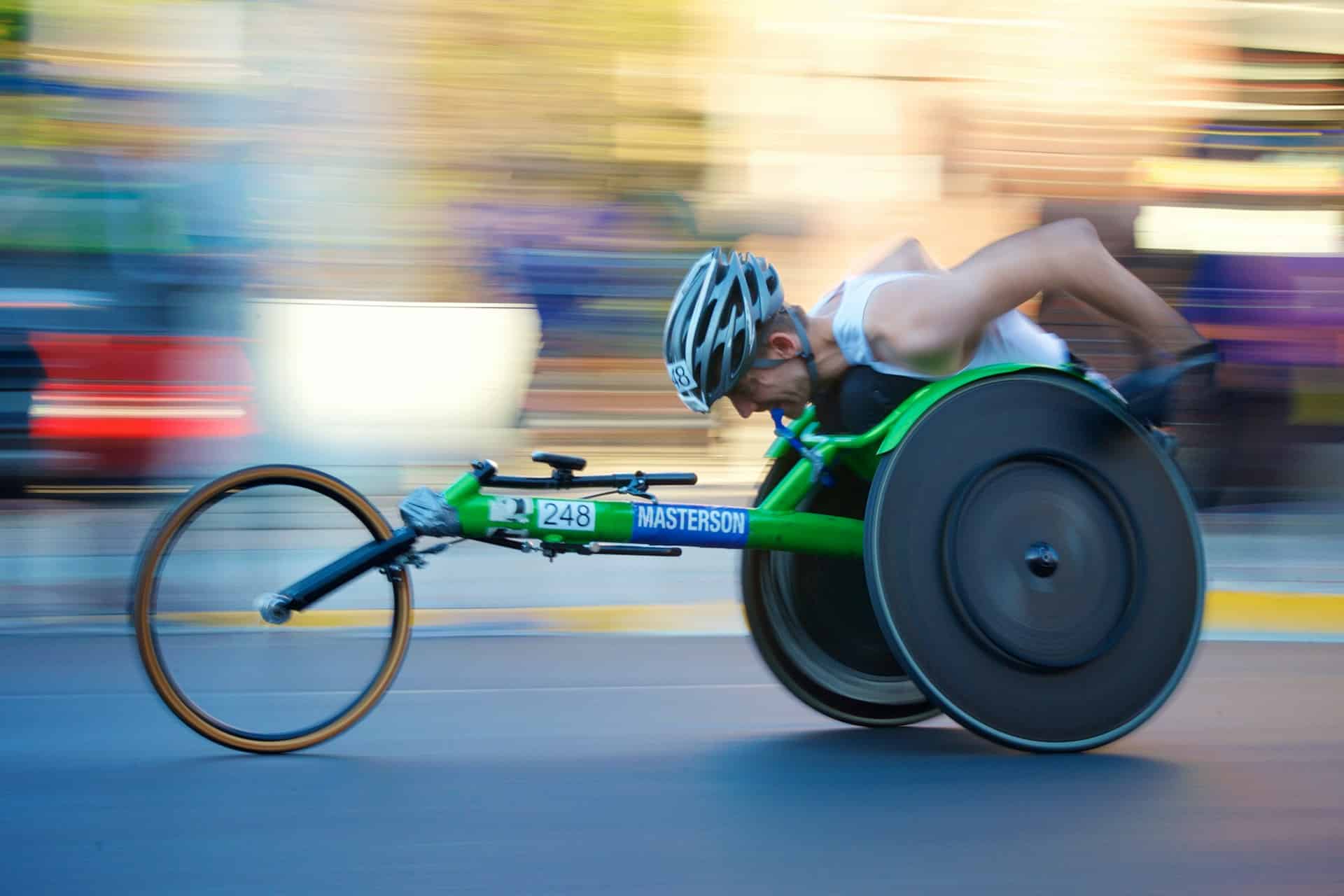The evolution of sports equipment for athletes with disabilities.

Since the dawn of modern sports, athletes have consistently sought an edge over their competitors. In the world of disability sports, this competitive drive is no less fierce. However, for athletes with disabilities, the equipment they use often plays a far more significant role in their performance. This article will delve into the fascinating topic of the evolution of sports equipment for athletes with disabilities.
The Role of Technology in Disability Sports
Technology has always been a driving force in the world of sports. From the first leather-bound footballs to the carbon-fiber tennis rackets of today, advances in technology have consistently pushed the boundaries of what’s possible in sports. For athletes with disabilities, the impact of these technological advancements is even more pronounced.
A lire également : How can mindfulness practices be tailored for athletes in high-pressure sports?
The world of disability sports has seen an explosion of innovation in recent years, much of it driven by advances in technology. This is particularly true for sports, such as wheelchair racing and Paralympic events, where the equipment used by athletes plays a critical role in their performance.
Thanks to developments in fields such as materials science, biomechanics, and engineering, sports equipment for athletes with disabilities has undergone a significant transformation. This evolution has not only enabled these athletes to perform at higher levels but has also opened up opportunities for more people with disabilities to participate in sports.
Avez-vous vu cela : The role of sports in promoting environmental conservation and awareness.
Adaptive Equipment: Enabling Participation and Performance
When we talk about sports equipment for athletes with disabilities, one term that frequently comes up is ‘adaptive equipment’. Adaptive sports equipment is, simply put, sports equipment that has been modified or designed for people with disabilities. This equipment allows athletes with disabilities to compete in a wide range of sports, from basketball and tennis to skiing and cycling.
In the world of wheelchair sports, for instance, the evolution of the sports wheelchair has been nothing short of revolutionary. From the heavy, cumbersome wheelchairs of the past, we now have wheelchairs designed specifically for different sports.
These wheelchairs are lightweight, highly maneuverable, and tailored to the individual athlete’s needs. They are a testament to how technology and design can come together to not only level the playing field for athletes with disabilities but also enable them to compete at the highest levels of their sports.
The Influence of Data and Analysis
The influence of data and analysis in the evolution of sports equipment for athletes with disabilities cannot be overstated. Modern sports are driven by data. Athletes, coaches, and equipment designers alike turn to data analysis to gain an edge.
For athletes with disabilities, data plays a crucial role in the design and optimization of their sports equipment. By analyzing data on an athlete’s performance, biomechanics, and even their disability, designers can create equipment that is tailored to the athlete’s unique needs.
This customized approach to equipment design has enabled athletes with disabilities to compete at levels that were previously unimaginable. It’s a clear demonstration of the power of data and analysis in driving innovation in sports technology.
The Future of Sports Equipment for Athletes with Disabilities
The future of sports equipment for athletes with disabilities looks bright indeed. With the continued advancement of technology and an increased understanding of the unique needs of athletes with disabilities, we can expect to see even more innovation in this area.
Already, we are seeing advances in fields such as prosthetics, where the development of bionic limbs has the potential to revolutionize disability sports. Similarly, advances in fields such as wearable technology and virtual reality offer exciting possibilities for athletes with disabilities.
While we can’t predict exactly what the future holds, one thing is certain. The evolution of sports equipment for athletes with disabilities is a story that is far from over. These athletes, and those who design and build their equipment, will continue to push the boundaries of what’s possible in sports. And we can’t wait to see what they come up with next.
The Role of Google Scholar and Crossref in Disability Sports Research
Google Scholar and Crossref are online research platforms that have significantly contributed to the evolution of sports equipment for athletes with disabilities. Researchers and designers often turn to these platforms to access a trove of scholarly articles, patents, and case studies related to sports and disability. By using keywords like ‘adaptive sports’, ‘wheelchair basketball’, ‘paralympic athletes’, ‘disabled athletes’, ‘para athletes’, and ‘adapted sport’, they can find a wealth of information to guide their work.
Using these platforms, researchers can access studies on the biomechanics of athletes with disabilities, the effectiveness of specific pieces of sports equipment, or the physical activity levels of people with different types of disabilities. PubMed and Crossref DOI systems also provide access to peer-reviewed papers that offer in-depth analysis and insights.
This research helps in understanding the unique challenges athletes with disabilities face and how they can be mitigated through the design of sports equipment. For instance, a study on wheelchair basketball might reveal how the design of the wheelchair impacts the athlete’s maneuverability and speed, informing future design improvements.
The role of these research platforms in the evolution of sports equipment for athletes with disabilities is ongoing. As new research emerges, designers and manufacturers are able to refine and innovate, constantly pushing the boundaries of what is possible in adaptive sports equipment.
Paralympic Games: A Showcase for Adaptive Sports Equipment
The Paralympic Games have played a pivotal role in propelling the evolution of sports equipment for athletes with disabilities. As a global showcase, the games capture the attention of the world, highlighting both the incredible skills of the athletes and the innovative equipment they use.
Notable advances in sports equipment are often first seen in action at the Paralympics. From high-tech racing wheelchairs to bionic limbs, the games offer a platform for manufacturers to present their latest innovations. The equipment used by athletes in these games becomes a benchmark for what’s possible, setting the standard for future developments.
The Paralympic Games also serve as a catalyst for innovation. The drive to compete at this high level spurs athletes, coaches, designers, and engineers to continually improve and adapt their equipment. The intense competition and the global stage of the games encourage a constant push for better, more efficient, and more personalized sports equipment.
Conclusion: The Unending Evolution of Adaptive Sports Equipment
In conclusion, the evolution of sports equipment for athletes with disabilities is an ongoing journey marked by relentless innovation and a deep commitment to inclusivity in sports. From the contributions of research platforms like Google Scholar and Crossref to the influence of the Paralympic Games, many factors are propelling this evolution forward.
It’s an evolution driven by technology, data, and an understanding of the unique needs of athletes with disabilities. But at its heart, it’s about people. It’s about the athletes who continually push their limits, the coaches who guide them, and the designers and engineers who build the equipment that helps them soar.
As we look to the future, one thing is clear: the evolution of sports equipment for athletes with disabilities is far from over. It’s a story that will continue to unfold, driven by the spirit of determination, perseverance, and innovation that defines these remarkable athletes. The impact of this evolution extends far beyond the sports field, shaping attitudes towards disability and championing inclusivity and equality in all areas of life.
